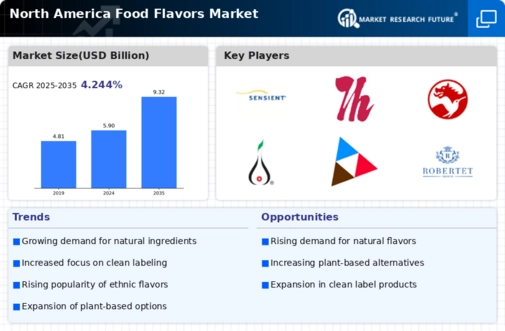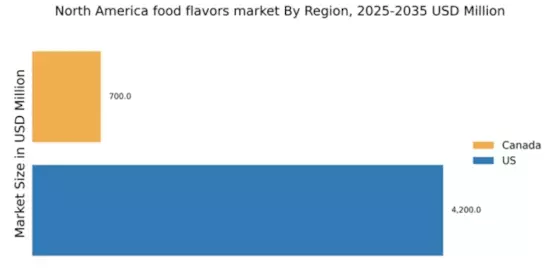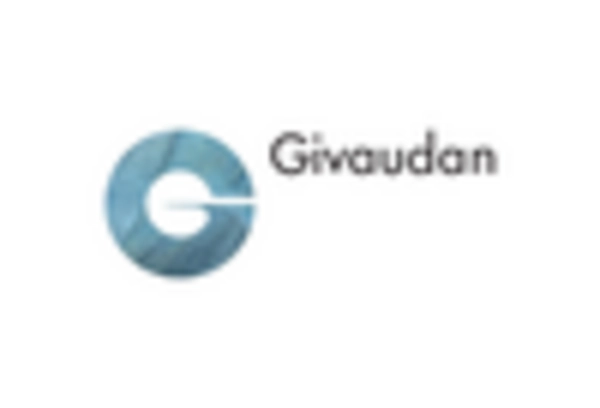The food flavors market in North America is characterized by a dynamic competitive landscape, driven by innovation, consumer preferences for natural ingredients, and the increasing demand for plant-based products. Major players such as International Flavors & Fragrances (US), Givaudan (CH), and Kerry Group (IE) are strategically positioned to leverage these trends. International Flavors & Fragrances (US) focuses on expanding its portfolio of natural flavors, which aligns with the growing consumer inclination towards clean label products. Givaudan (CH) emphasizes innovation through its investment in research and development, aiming to create unique flavor profiles that cater to diverse culinary trends. Meanwhile, Kerry Group (IE) is enhancing its operational capabilities through strategic acquisitions, thereby strengthening its market presence and product offerings.
The competitive structure of the food flavors market appears moderately fragmented, with several key players vying for market share. Companies are increasingly localizing manufacturing to reduce lead times and optimize supply chains, which enhances their responsiveness to market demands. This localized approach, combined with strategic partnerships, allows these companies to maintain a competitive edge while addressing the specific needs of regional markets.
In October 2025, International Flavors & Fragrances (US) announced a partnership with a leading plant-based food manufacturer to develop innovative flavor solutions tailored for the growing vegan segment. This collaboration is likely to enhance IFF's position in the plant-based market, reflecting a strategic move towards meeting consumer demand for flavorful, plant-derived options. Such partnerships not only expand product offerings but also reinforce the company's commitment to sustainability and health-conscious choices.
In September 2025, Givaudan (CH) launched a new line of organic flavors, which are derived from sustainably sourced ingredients. This initiative underscores Givaudan's focus on sustainability and its response to the increasing consumer preference for organic products. By investing in organic flavor solutions, Givaudan positions itself as a leader in the market, appealing to health-conscious consumers and enhancing its brand reputation.
In August 2025, Kerry Group (IE) completed the acquisition of a regional flavor company, which is expected to bolster its capabilities in flavor innovation and expand its customer base. This acquisition aligns with Kerry's strategy to enhance its product portfolio and strengthen its market position. By integrating the acquired company's expertise, Kerry Group is likely to accelerate its growth trajectory and improve its competitive standing in the food flavors market.
As of November 2025, the competitive trends in the food flavors market are increasingly defined by digitalization, sustainability, and the integration of artificial intelligence in flavor development. Strategic alliances are becoming more prevalent, as companies recognize the value of collaboration in driving innovation and meeting evolving consumer demands. Looking ahead, competitive differentiation is expected to shift from price-based strategies to a focus on innovation, technology, and supply chain reliability. This evolution suggests that companies that prioritize sustainable practices and technological advancements will likely emerge as leaders in the food flavors market.


















Leave a Comment